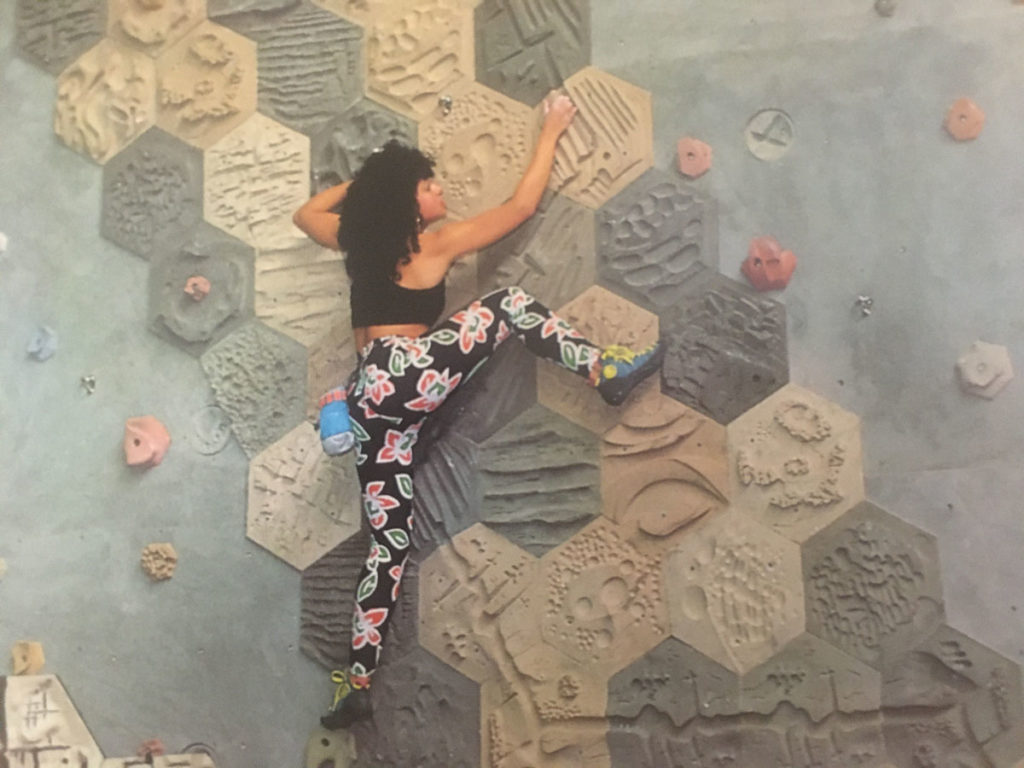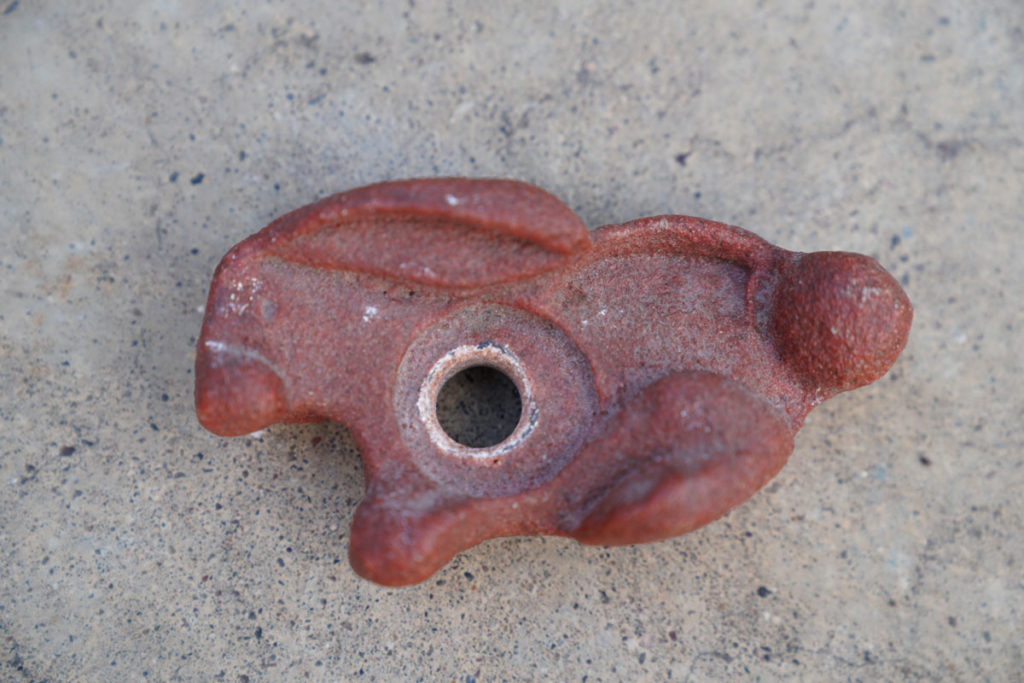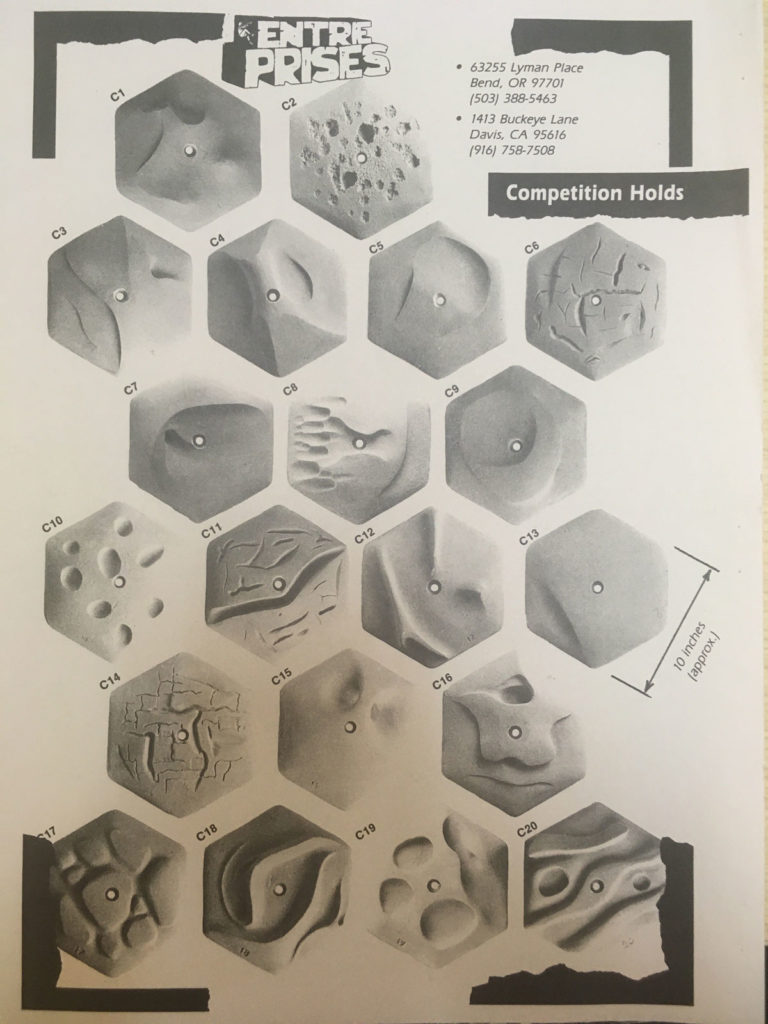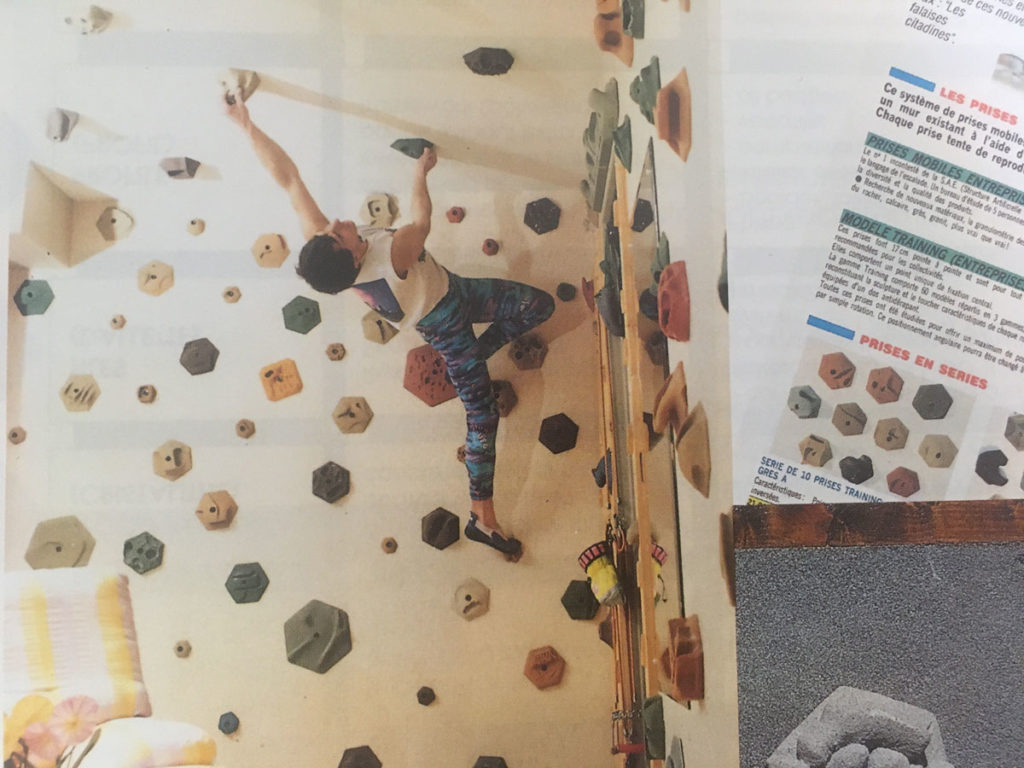Old Holds is a column that examines the many shapes that have played pivotal roles in climbing’s heritage. Whether you like to comb eBay for old holds to add to your home wall or you’re just a nerd for this stuff (like we are), we hope you’ll dig the explorations. If you have an old hold that you’d like to see featured, snap a pic and tell us about it.

Brand: Entre-Prises
Design: hexagonal shapes with various grooves, edges, and undulations
Approximate Launch Date: 1986
How It Changed the Game: It seems fitting to launch a series about “old holds” with one of the all-time oldest and most classic shapes—the bolt-on hexagons from Entre-Prises. So ubiquitous were these holds throughout the 1980s (on home walls, at the earliest gyms, and in virtually every competition) that they quickly became synonymous with the very concept of climbing. Indeed, if climbers at the time ever thought about climbing on anything other than real rock, they undoubtedly conjured up mental images of indoor ascents on these Entre-Prises hexagons.
Yet, given the historical importance of these hexagonal holds (which were originally shaped in Europe), it is incredible to realize the role that sheer luck played in their American iteration. Entre-Prises, as a brand, was started by a young Frenchman named Francois Savigny in 1985. The early hallmarks of Savigny’s French company were hexagonal-shaped wall tiles that could be paneled together to create an entire vertical plane of climbable surface. Hexagonal-shaped resin holds, which could be bolted onto the walls, added to Entre-Prises’ offerings in the European market.
But equally important to this whole history were two American climbers—Chris Grover and Alan Watts. Together, also in the 1980s, Grover and Watts helped put Smith Rock, Oregon, on the map as an international destination for world-class outdoor climbing. In 1986, Grover and Watts traveled to Munich, Germany, to attend ISPO—essentially Europe’s version of the Outdoor Retailer trade show. Many European brands were particularly eager at the time to get their gear into the hands of Grover and Watts. “Smith Rock was in the magazines, and because people knew about Smith Rock, I ended up bringing back a whole duffel bag of free gear that people gave me,” Watts recalls. “And included in that gear were two resin climbing holds.”
It is impossible to overstate the importance of those two holds—one of which was vaguely bunny-shaped, the other like a seashell. Although carved wooden shapes and glued rocks had previously been used as crude climbing holds on walls in the United States, these two holds in Watts’ luggage were, in fact, the first-ever resin-based modular climbing holds brought to the United States from Europe. And they instantly inspired Americans to start shaping their own artificial climbing holds.

Some of the earliest known experimentation with holds by American shapers would soon follow. Alan Watts, Chris Grover, as well as another neophyte American shaper named Brooke Sandahl, quickly found themselves working for Metolius—a company that had been newly founded by climber Doug Phillips in Oregon. Yet, at some point amid this ongoing and freewheeling American hold creation, European advertisements from Entre-Prises found their way to the U.S. These ads inspired Watts, Grover, and Sandahl to make hexagonal-shaped holds at Metolius—a nod to the innovative designs of Savigny.
Such parallel use of the hexagon hold shape by Entre-Prises (in Europe) and Metolius (in the U.S.) became an issue that surfaced at another trade show approximately one year later in Las Vegas. There, Grover, Watts, and a few others were showcasing their hexagonal holds and tiles at a Metolius booth. But also in attendance at the trade show—unbeknownst to anyone at Metolius—was Savigny. Savigny saw Metolius’ hexagonal holds and immediately pointed out that Entre-Prises held the trademark for that particular shape. The dialogue that followed, which continued for a few months in the form of international letters and phone calls, resulted in Savigny coming to a crucial realization: it would be better to partner with someone in the U.S. than to shut out the American market completely over a legal squabble. This acceptance eventually led to the founding of an Entre-Prises office in the U.S. in 1988 by Watts, Grover, and Doug Phillips—and the use of Savigny’s original hexagonal molds (in various sizes) to establish the brand’s presence in the U.S.

As remarkable as the story is, it is worth highlighting just how versatile the hexagonal shape was. The slightest alteration to the placement of the hexagonal holds on a wall could change the entire complexion of a route; this adaptability likely played a significant role in the holds’ sustained popularity and prevalence on the American market for the rest of the 1980s and much of the 1990s.
“I remember Francois telling me how with the hex shape, you could turn it a little and it would go from being an edge to an undercling,” Alan Watts recalls. “Francois was an engineer, and there was something about that [shape] that really appealed to him.”

Alan Watts himself would remain at Entre-Prises until 1997, exiting at a time when the indoor climbing world was on the cusp of a boom. “It was fun to be part of it all,” he reflects now. “The industry didn’t really exist in that period of time, so it was fascinating. People would say, ‘Climbing walls? Why?’ They just didn’t understand. To try and sell the concept was very difficult.”
And although the hexagonal holds would eventually exit the Entre-Prises line as well, it is fair to place them among the most important shapes; they helped spawn a vibrant and robust American scene.


John Burgman is Senior Editor at Climbing Business Journal, as well as the author of High Drama, a book that chronicles the history of American competition climbing. He is a Fulbright journalism grant recipient and a former magazine editor. He holds a master’s degree from New York University and bachelor’s degree from Miami University. In addition to writing, he coaches a youth bouldering team. Follow him on Twitter @John_Burgman and Instagram @jbclimbs









